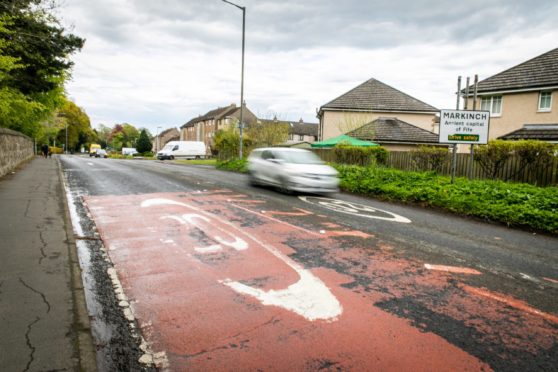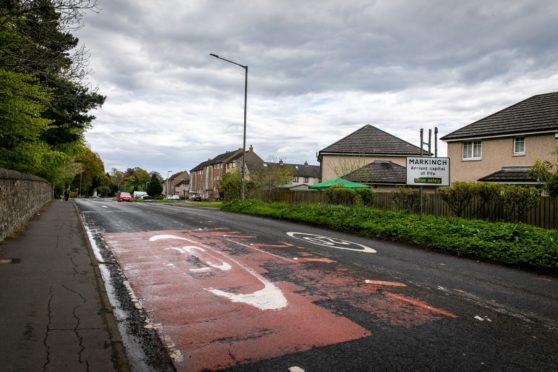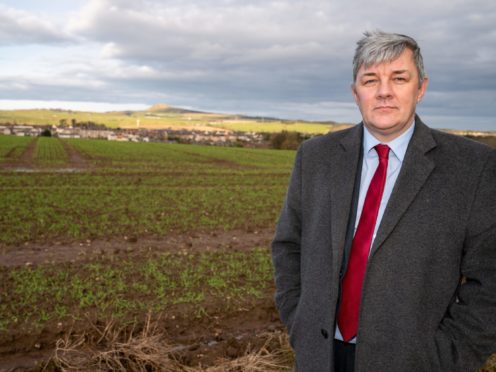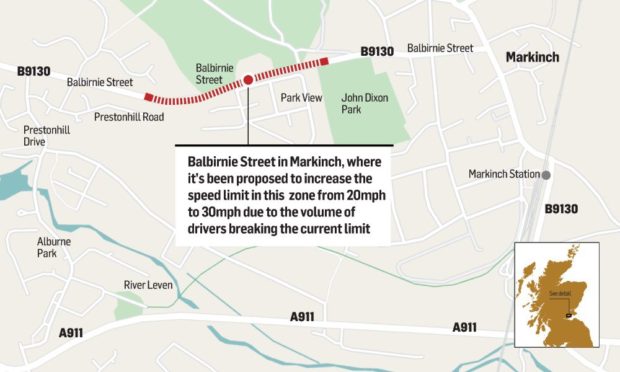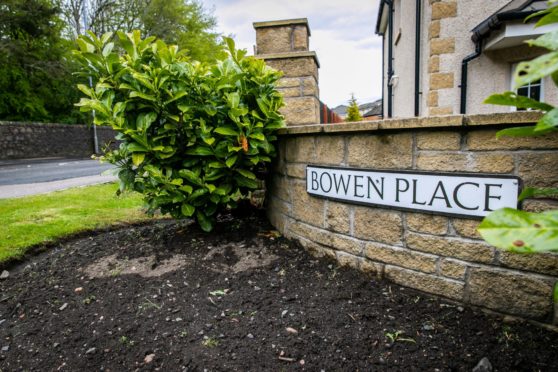A 20mph speed limit in a Fife town is to be scrapped because drivers won’t obey it.
Officials say 85% of drivers are ignoring 20mph signs on the B9130 in Markinch, despite extensive efforts to enforce the rules.
Most are travelling at 29 or 30 mph and Fife Council officers say changing the limit to 30 will “align the mandatory limit to drivers’ perception.”
The move will cost around £10,000.
But the council has been accused of making a rod for its own back by allowing motorists to determine what the appropriate speed should be.
Labour councillor Altany Craik said it could encourage people across Fife to decide what speed they would like to do elsewhere.
“Basically, we’re saying we should make it 30 because drivers can’t stick to 20,” he said.
“We need to be careful of the impact this will have.”
The original 20mph speed limit began at the junction of Sweetbank Terrace but was extended westwards in 2016 when a new housing development was built.
Transportation officer Dhusjan Sivaratnam said: “Over the time that this 20mph extension has been in operation, compliance has been very poor.”
A number of measures were taken, including more signs, but nothing worked.
“The persistent lack of compliance with the speed limit and the results of the speed surveys clearly indicate that drivers perceive 30mph to be the appropriate limit on this stretch of road,” Mr Sivaratnam said.
“The replacement of the 20mph zone with a 30mph limit would align the mandatory limit with drivers’ perception.”
‘Drivers themselves have decided’
The new limit will apply to the section between Bowen Place and the entrance to Balbirnie Estate.
But Mr Craik is not impressed.
“Drivers are determined to speed on this road regardless of speed cushions etc,” he said.
“Drivers themselves have decided it should be 30. I’m not sure that’s the best way of determining what the speed limit should be.”
He added: “The impact of having this kind of justification for a change means all over Fife we’ll be encouraging people to say we don’t like that 20, 30 or 40 and start making a case for it.
“We need to be careful we’re not making a rod for our own back.
Mr Craik conceded that it had perhaps not been appropriate to reduce the limit to 20 in the first place.
“It’s more about the justification being given for the change,” he said.
“It should be about safety and getting the right traffic management in place.”
Change will cost £10,000 to implement
Officers will now draw up a new traffic regulation order and advertise the change after local councillors agreed to it.
The £10,000 bill will cover legal costs, advertising and the cost of new infrastructure.
This includes new speed markings, and other safety elements such as a pedestrian traffic island and dropped kerbs.
Mr Sivaratnam said: “The road is quite wide and that might be a factor in why people are speeding.
“We could even put more speed cushions there and they’ll still speed.”
